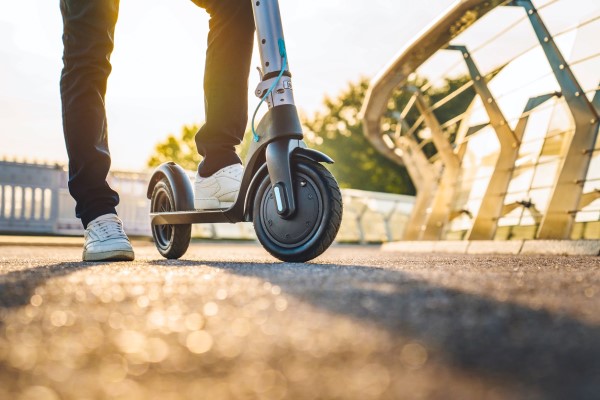E-scooters help transportation equity
Text block one

To help curb greenhouse gas emissions, cities everywhere have been promoting micromobility services, including shared bikes and e-scooters. Chicago launched two pilot programs for e-scooters in 2019 and 2020.
Working with the Chicago Department of Transportation, Abolfazl Mohammadian, professor of civil, materials, and environmental engineering and department head, and Chuck Abraham, manager of program support with the Illinois Department of Transportation, studied the launch to identify barriers that may impact how frequently Chicagoans adopt the technology as well as whether e-scooters could help create a more equitable transportation system.
“Empirical evidence shows that most car-based trips in the U.S. are short enough so that they can be alternatively performed using micromobility options, if the barriers that hinder switching from a mode of transportation as comfortable as private cars are resolved,” Mohammadian said.
Using state-of-the-art artificial intelligence techniques and advanced statistical analyses, they identified several equity groups within the population, including people from historically marginalized or disadvantaged communities, such as users who are Black or living in Chicago’s equity priority area (a region identified as being underserved by transit), and people who are socioeconomically disadvantaged, such as users with lower incomes or educational attainment.
The equity groups generally reported proportionally more frequent e-scooter usage and interaction with mass transit. They also reported having to travel longer distances more frequently to obtain an e-scooter, highlighting the need for regional planning agencies and micromobility operators to collaborate to ensure all users benefit equally from the technology.
The researchers’ efforts paid off, as the City of Chicago announced in April that 4,000 e-scooters will join Chicago’s transportation system, and half are required to be located in the city’s equity priority area.